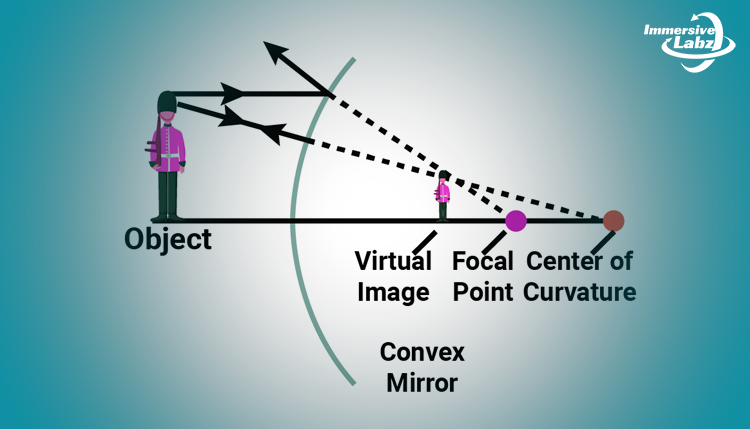Physics Practicals Class 12
Focal Length of Convex Mirror Using Convex Lens
- Perform science experiments at your fingertips
- Learn anytime and from anywhere
- 3D gamified way of advanced learning
- Boost your academic score
- Accessible through Mobile, Laptop, Desktop, and Tablet
- Gain a competitive edge in IIT and NEET exams
About Simulation
- In this simulation, you will learn why a convex lens is used to measure the focal length of convex mirror in convex mirror experiment of physics practicals class 12.
- You will understand how the concept of a convex mirror is used in traffic mirrors.
- You will study the image formation by the convex mirror and its use as a safety mirror in various workplaces.
- All the experiment steps and procedures, such as measuring the positions of the object needle, image needle, convex lens, and mirror, noting the readings, removing the parallax and index error, etc., are highly interactive and have been precisely recreated in a manner that is very similar to what you would do in a physics lab.

- While conducting or performing experiments, this approach generates an immersive environment and gives you a real-lab-like experience.
- This will help learners to better prepare for various competitive exams such as IIT-JEE (JEE Main & Advanced), NEET, and Olympiads.
Simulation Details




Description
A convex mirror always forms a virtual image of a real object; hence, the value of 𝑣 (i.e., the position of the image) cannot be obtained directly. Therefore, a convex lens is used to enable us to form a real image due to the combination.
Let an object O be placed between 𝑓 and 2𝑓 of a convex lens L and its image be formed at I, which we locate by removing the parallax between the image pin and the image of O. fig. (a)

Now, keeping the position of O and L fixed, we place the convex mirror between L and I at such a position so that the image of O is formed just above it, as shown in fig. (b). This happens when the rays retrace their path, i.e., when the rays fall on the mirror normally. This means that MI is the radius of curvature of the mirror.
Since, R = 2𝑓 $$\Rightarrow f=\frac{\mathrm{MI}}{2}$$
Requirements for this Science Experiment
⦁ Optical Bench ⦁ Optical Needles ⦁ Optical Needles ⦁ Convex Lens ⦁ Uprights ⦁ Lens & Mirror Holder
Why Choose SimuLab for Science Practicals?

Image Gallery












Try SimuLab
A 3D virtual science lab (physics lab, chemistry lab, and biology lab) that helps students learn science experiments easily.



